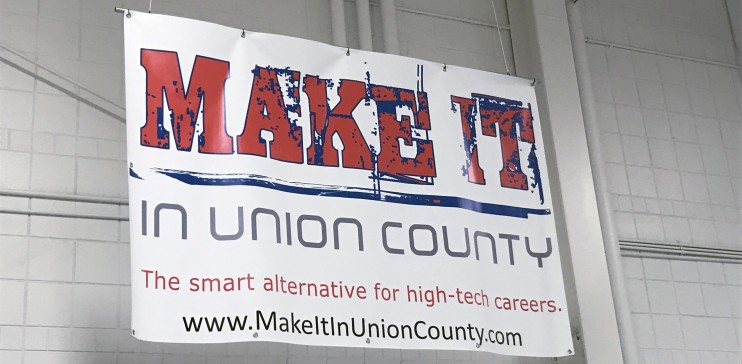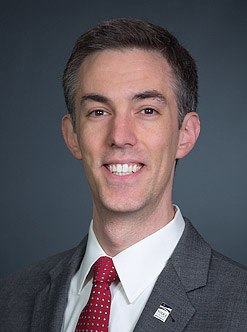
 Matt Calabria is a member of the Z. Smith Reynolds Foundation’s Community Leadership Council, a Wake County Commissioner and an attorney with McGuireWoods LLP.
Matt Calabria is a member of the Z. Smith Reynolds Foundation’s Community Leadership Council, a Wake County Commissioner and an attorney with McGuireWoods LLP.
In a state as broad and diverse as North Carolina, how can a foundation come to understand the challenges so many different communities face and begin to take steps toward addressing them? It turns out that the answer involves a lot of shoe leather.
In October, the Z. Smith Reynolds Foundation traveled to Union County for several days to meet with community leaders as part of its yearlong strategic assessment process and its statewide Mo Wants to Know listening and learning tour. The goal was to learn more about that part of the state; to understand its strengths, opportunities and challenges; and to gain insight into what its residents hoped to improve. As a member of the Foundation’s Community Leadership Council – a diverse group of 20 leaders from across NC who are helping the Foundation develop its priorities for the years ahead – I was honored to accompany Foundation leadership on this visit.
As an elected member of the Wake County Board of Commissioners, I approached this trip with a great deal of curiosity. After all, studying different places has a tendency to make you go back to first principles, to realize that “givens” in your community are in fact choices worth considering. Wake County continues to wrestle with growth and economic inequality, among other things, and it would be fascinating to see how another community addressed similar challenges.
Union County certainly has its own unique story to tell. But at a time when many in the political space go to lengths to describe “two North Carolinas” – rural and urban, rich and poor – I was struck not just by the differences between our communities, but also by the similarities. The presence of a growing economic center to the west – in Wake County's case, the Research Triangle Park; in Union County’s case, Charlotte – prompted a response from nearby municipalities. Reflecting a duality found in perhaps all growing communities, some of the people we talked to embraced growth as an engine of progress, while others sought to preserve their culture and quality of life by stemming growth and its effects. Also like Wake County, growth has been slower to affect communities in the east, which remains more rural and more geographically separated from the benefits and burdens of change in the west. As with any community one might study, we also heard about inequality. Approximately 10 percent of Union County residents, and 13 percent of its children, live in poverty. In Wake County, the numbers are similar. Some folks we talked with also discussed the impact of economic disparities on public education.
Perhaps most memorably, we met wonderful people who are working to advance their community. Volunteers, business people, and nonprofit and faith leaders are all working to raise up their community. Wingate University proves to be a tremendous economic engine and an innovative center of art, culture and industry. Leaders in advanced manufacturing compete in a global marketplace. And, importantly, everyone we talked to expressed pride in where they are from. When we asked area students what they wanted to do in their careers, most said they hoped to live and work in Union County.
As we left Union County, it was easy to wonder about the Foundation’s opportunities there and in similar places. We met so many fantastic people doing great work, but they sometimes lamented feeling siloed. How might the Foundation foster collaboration by breaking down the barriers that often form as a result of geography, inertia, listlessness, or simple artifact of history? Others wished they had the support needed to do more of what they are doing well. Can the Foundation amplify their work? Lastly, many saw significant challenges, such as with wastewater management and access to transportation. Yet they felt they lacked the bandwidth to tackle these issues themselves. How can the Foundation encourage new leaders to come forward and arm them with the tools to succeed?
While the Foundation doesn’t yet know what its funding priorities will be after May 2017, simply being able to identify these questions has significant implications for the Foundation as it continues to go through its strategic assessment process. The strengths and challenges in Union County all have faces of their own. But through the relationships we developed during our visit, we are better equipped to understand the myriad needs there and throughout the state. After all, the greatest impact we may ever have is through empowering others to be catalysts for change.